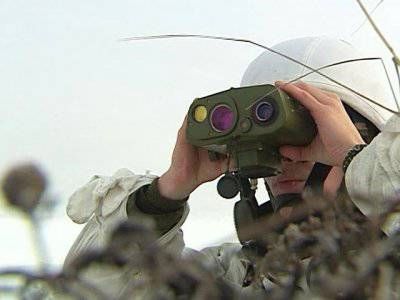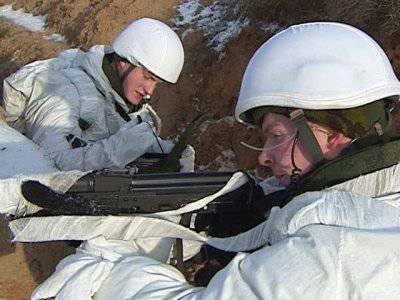Army in 3D
 In a training battle, a reconnaissance motorized rifle unit per unit of time must obtain as much information as possible. You need to take into account everything: the location of the enemy, features of the terrain, the presence of ditches, dells, communications. One visual observation is not limited to this; aerial reconnaissance carried out by an unmanned aerial vehicle will be a good addition.
In a training battle, a reconnaissance motorized rifle unit per unit of time must obtain as much information as possible. You need to take into account everything: the location of the enemy, features of the terrain, the presence of ditches, dells, communications. One visual observation is not limited to this; aerial reconnaissance carried out by an unmanned aerial vehicle will be a good addition.All collected data is received by the deputy commander of the reconnaissance platoon. For their analysis, he uses a personal computer, which is a kind of information center for conditional combat. It receives all the information that the department manages to collect: photographs, coordinates of possible targets. It is possible to display the location of their troops and enemy units, attack routes, lines of defense, artillery strikes.
All received information about the situation on the battlefield is displayed on a special interactive electronic map. It allows you to watch the full picture of the battle. One could only dream of such possibilities when using ordinary paper cards. According to Anton Apanasenko, who acts as the commander of the reconnaissance battalion, published on the Vesti website, previously a lot of time was spent on building various graphs, building relief relief pictures, used to determine the appearance of objects. When using an electronic map, all this information is updated with a few mouse clicks every second.
 The development of military electronic maps is handled by the 38-th Central Aerophoto-Topographic Detachment, located in Noginsk, Moscow Region. Here a huge number of satellite images are drained, after which they are tied to the terrain in the coordinate system. On the basis of photographs made maps. The squad commander Alexey Anisov notes that the unit uses only Russian-made equipment and software used directly in the process of creating topographic maps in electronic form. Currently, digital versions of space aerial photographs are used for this.
The development of military electronic maps is handled by the 38-th Central Aerophoto-Topographic Detachment, located in Noginsk, Moscow Region. Here a huge number of satellite images are drained, after which they are tied to the terrain in the coordinate system. On the basis of photographs made maps. The squad commander Alexey Anisov notes that the unit uses only Russian-made equipment and software used directly in the process of creating topographic maps in electronic form. Currently, digital versions of space aerial photographs are used for this.Detailed digital maps become military after the application of various objects in the center of geo-information support. Here the strategy of combat operations is worked out, the positions of the enemy troops and their troops are taken into account. According to the head of the center, Igor Rutko, the use of paper cards is gradually reduced. The main work is now carried out with the use of topographic maps in electronic form, which make it possible to move from observing the general structure of army troops to one soldier in a trench.
According to military cartographers, the potential of using electronic maps is inexhaustible, in the near future they will become a real database. For example, to obtain information about the carrying capacity of a bridge or the depth of a river, it will suffice to hover over their image. All this will allow increasing the effectiveness of troop movement, which will become an undoubted trump card in modern battle conditions.
Information